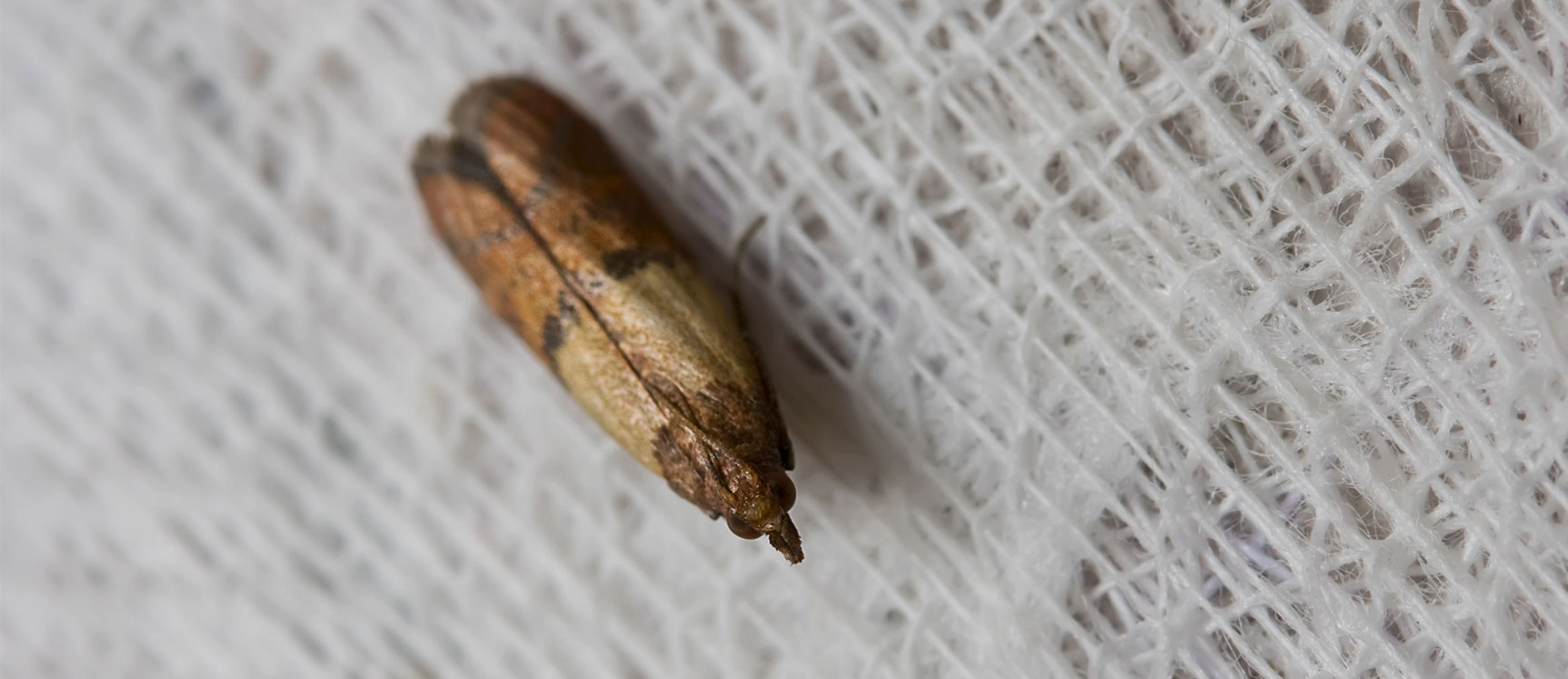Pest Info /
Pantry Moth
Pantry Moth, is a pyraloid moth of the family Pyralidae. Adults are 8-10 mm in length with 16-20 mm wingspans. The outer half of their forewings are bronze, copper, or dark gray in color, while the upper half are yellowish-gray, with a dark band at the intersection between the two. The moth larvae are off-white with brown heads. When these larvae mature, they are usually about 12 mm long.
The entire life cycle of this species may take 30 to 300 days. Female moths lay between 60 and 400 eggs on a food surface, which are ordinarily smaller than 0.5 mm and not sticky. The eggs hatch in 2 to 14 days. The larval stage lasts from 2 to 41 weeks, depending on the temperature.
The Pantry Moth larvae can infest a wide range of dry foodstuffs of vegetable origin, such as cereal, bread, pasta, rice, spices or dried fruits and nuts. More unusual recorded foods include chocolate and cocoa beans, coffee substitute, cookies and flour. The food they infest will often seem to be webbed together.
After larvae or moths have been found, it is important to throw out all food sources that are not in very tightly sealed containers. The moths are able to get into surprisingly tight spots, including sealed bags and Tupperware containers. They are also notoriously difficult to get rid of, and can crawl on ceilings and spin cocoons in rooms other than the kitchen or pantry where they hatched. Last instar larvae are able to travel significant distances before they pupate. When seeking the source of an infestation, the search thus cannot be limited to the immediate area where pupae are discovered.
Source: Wikipedia
Copyright © 2012-2021 BumbleBee Pest Control Pty Ltd (ABN: 63 154 998 937)
